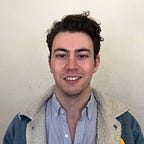Hippies, Hells Angels and the Grateful Dead: when a famous NYC fashion photographer shot SF in the ‘60s
Palo Alto’s Pace Gallery showcases Irving Penn’s sublime portraits from the heyday of the Haight Ashbury.
“In 1967 there was word coming out of San Francisco of something stirring — new ways of living that were exotic even for California,” wrote famed fashion photographer Irving Penn in his book Worlds in a Small Room. “People spoke of a new kind of people called hippies, and of an area where they had begun to congregate called Haight-Ashbury.”
Today, some of Penn’s most remarkable work from that era is on display in Palo Alto’s Pace Gallery.
When Penn arrived on assignment for Look Magazine during the peak of San Francisco’s counter-cultural moment, he was already a well-known photographer — most notably for his formative role in the creation of Vogue Magazine’s signature fashion photography aesthetic.
Yet this was not Penn’s first visit to the Bay Area; he had first photographed San Francisco over a decade prior just as the Beat literary scene was getting its start and the city buzzed with a young and rebellious energy. As he wandered the city, Penn captured street scenes and landscapes, such as century-old buildings and the long-gone Lone Star Baptist Church. It may be difficult for current residents to imagine just how different the Bay was at that time but, fortunately, some of Penn’s photos from that earlier period are also on display at the Pace Gallery show.
Penn took a different approach to capturing the life of the Bay on his second trip. This time, rather than walking the streets in search of subjects, he brought members of counter-cultural groups like the hippies or Hell’s Angels back to the studio he had rented in Sausalito, where he photographed them with his medium format Rolleiflex camera in natural light against a “simple background,” reminiscent of his approach for fashion photography.
Penn’s work in the Bay was an extension of the “striking style in still life and portraiture” photography he had become known for during his career at Vogue, according to the Irving Penn Foundation. After the Second World War, the magazine sent Penn on assignment around the world, where he developed an affinity for portraiture that took advantage of natural lighting, rather than the elaborate artificial lighting setups favored by some photographers of the time. Penn’s studio environment existed in a space between the controlled and the natural. While the appearance of each photograph was still at the mercy of the level of natural light available, the subjects remained posed in front of a simple backdrop selected by Penn.
Penn had worked in dozens of studios around the globe but his Bay Area portraits taken in a studio in Sausalito, are particularly striking. The studio not only had spectacular natural lighting but was also sturdy and accessible enough for the Hells Angels to bring their massive motorcycles to the shoot.
The photographs from those sessions continue to engage viewers a half-century later.
From the gallery wall, Hell’s Angels stare resolutely back at the viewer, challenging the gaze of both the photographer and the gallery-goer. Hippie families and a group of now-legendary local musicians (namely — the Grateful Dead and Big Brother & the Holding Company) adorn another wall nearby.
Pace notes that Penn was “a master craftsman and innovator in photographic printing.” The images on display in this exhibit are printed with gelatin silver, Cibachrome, and platinum-palladium,(a highly time-consuming, labor intensive process) which collectively speaks to a degree of photographic craft often forgotten in the digital era.
Beyond the Bay Area imagery, the gallery presents a variety of Penn’s other work, including portraits of NYC artists and writers, as well as global journeys ranging from New Guinea to the Sahara.
The show “highlight[s] Penn’s work in the Bay Area while contextualizing these pieces in his larger oeuvre,” says the gallery.
Pace Gallery showcases their Irving Penn exhibit now until May 26, Tuesday through Sunday, Tues-Sat 11–7 (Sun 11–5).
The exhibit is free and open to the public.
For more info about the Pace galleries, click here.
Stay up to date with other coverage from The Six Fifty by subscribing to our weekly newsletter, featuring event listings, reviews and articles showcasing the best that the Peninsula has to offer. Sign up here!
